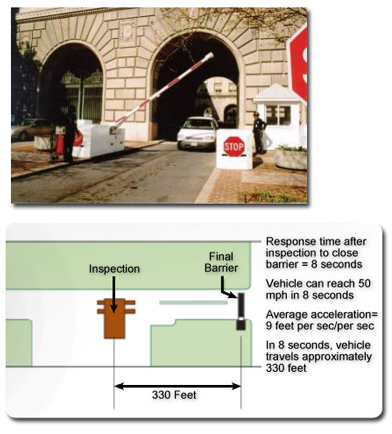Selecting the proper wedge barrier is essential for guaranteeing the security and effectiveness of your access control system. Here are key issues to hold in mind when choosing your subsequent wedge barrier:
1. Security Requirements:
Threat Level: Determine the extent of safety needed. For high-security installations, contemplate crash-rated wedge limitations designed to face up to high-impact forces from hostile automobiles.
Certifications: Ensure the wedge barrier meets worldwide standards and certifications for crash testing and impact resistance if security against vehicular attacks is a main concern.
2. Site-Specific Factors:
Space Availability: Consider the obtainable space for set up, together with width and depth. Some areas may require shallow mount or surface-mounted wedge obstacles because of area constraints.
Surface Type: The type of surface (paved, unpaved) affects the installation. Some wedge obstacles are suitable for both asphalt and concrete surfaces, whereas others may require specific set up circumstances.
Utilities and Infrastructure: Be aware of underground utilities and infrastructure to avoid conflicts during installation.
three. Operational Requirements:
Speed of Deployment: Consider how quickly the wedge barrier deploys. Rapid deployment is essential for areas requiring quick response occasions.
Control Options: Evaluate control methods corresponding to distant management, entry cards, biometric methods, or integration with current security techniques for seamless operation.
Integration Capability: Ensure the wedge barrier can integrate with different security systems like access management, surveillance cameras, and alarms for a complete safety community.
four. Maintenance and Reliability:
Maintenance Requirements: Consider the upkeep needs of the wedge barrier. Some types require extra common maintenance than others. Assess the benefit of upkeep and availability of local service and support.
Reliability: Choose a reliable wedge barrier from reputable producers to minimize downtime and guarantee continuous safety.

5. Compliance and Regulations:
Local Regulations: Adhere to native legal guidelines and regulations governing the set up and operation of wedge barriers. Obtain necessary permits and approvals.
Accessibility Standards: Ensure the wedge barrier complies with accessibility standards, particularly if it's installed in public areas.
6. Environmental Considerations:
Weather Resistance: Choose materials and finishes that withstand the local local weather, together with resistance to corrosion in coastal areas or extreme temperatures in desert regions.
Environmental Impact: Consider eco-friendly options, especially if the set up web site is environmentally sensitive.
7. Cost and Budget:
Initial Cost vs. Total Cost of Ownership: Consider each the preliminary purchase cost and the long-term maintenance expenses. Check over here could be justified by lower maintenance prices over the barrier's lifespan.
Budget: Determine a price range vary for the wedge barrier set up, together with related costs corresponding to excavation, installation, and integration with present methods.
eight. Future Expansion:
Scalability: If there's potential for future enlargement, choose a wedge barrier system that can be easily integrated into a larger security community.
9. Manufacturer Reputation:
Reputation: Choose a wedge barrier from a good and experienced producer recognized for producing dependable and high-quality security merchandise.
Considering these elements will help you choose a wedge barrier that aligns together with your safety wants, website requirements, and price range constraints, making certain a safe and efficient access control answer..
